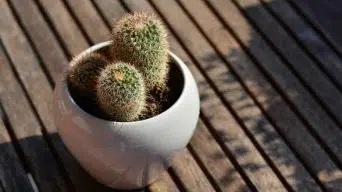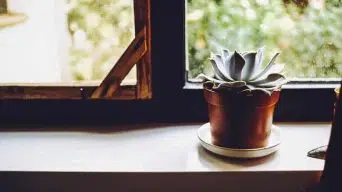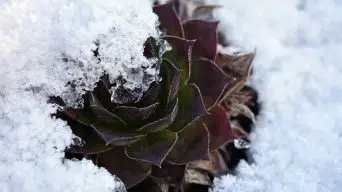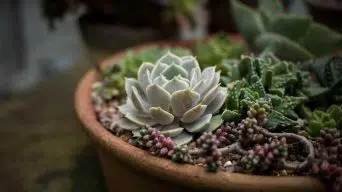Yes, succulents generally require direct sunlight to thrive. While some specific succulent types may tolerate bright, indirect sunlight or partially shaded areas, direct sunlight benefits their overall health and growth. It is important to note that the amount of sunlight needed can vary depending on the specific type of succulent and its growing conditions. Proper exposure to sunlight helps succulents maintain their vibrant colors and compact growth patterns.
Are you fascinated by the world of succulents but tangled up in myths and misconceptions about their sunlight needs? Forget what you’ve heard and unlock the truth right here.
This guide will shed light on the complexities of succulent care, breaking down everything you need to know about their growing conditions.
No green thumb is required – just a desire to let your succulents thrive as we debunk popular myths and reveal key insights into how much sunshine these resilient wonders actually need. Get ready for a journey that’ll transform your perspective and prowess on succulent care.
Facts and Statistics
- The majority of succulents require at least 6 hours of indirect sunlight each day, although exact requirements vary depending on the species.
- Studies have found that some types of cacti and other succulents can withstand up to 14 hours of light per day, but they also need periods of darkness for rest.
- Research on indoor gardening demonstrates that south-facing windows provide the most daylight for indoor succulents, making them an ideal location for these sun-loving plants.
Understanding Sunlight Requirements for Succulents
When it comes to caring for succulents, understanding their sunlight requirements is crucial for their overall health and growth. Succulents are known for their ability to store water in their leaves and stems, making them well-suited to arid environments. While they require sunlight, the amount can vary depending on the succulent type and its growing conditions.
Different succulent species have different light preferences, ranging from those that thrive in bright, direct sunlight to those that prefer more indirect or filtered light. It’s important to consider factors such as the sun’s intensity, climate, and location.
Most succulents generally tolerate bright, indirect sunlight or partially shaded areas. They can handle a few hours of direct sun but might need some protection from intense afternoon rays. It’s worth noting that direct sunlight for extended periods can be harmful and lead to burning of the leaves.
Coastal areas of central and southern California provide more ideal growing conditions for succulents due to the milder climate and less intense sun. The moderate coastal weather allows for a good balance of bright light without the risk of scorching the plants.
However, in desert regions like Tucson, Arizona, where the sun is more intense, it’s advisable to grow succulents in pots that can be moved around and protected from direct sunlight during the hottest parts of the day. This ensures they receive sufficient light while avoiding overheating and sunburn.
Let’s take the example of an Echeveria succulent. These popular rosette-shaped plants enjoy several hours of direct morning sun but prefer shade during hot afternoons. Placing them near east-facing windows or providing them with filtered light through sheer curtains can create an optimal environment for their growth.
Indoor succulents have their own set of requirements as well. They crave bright, natural light to thrive. The specific exposure needed depends on the climate and location of your home. Placing them near windows that receive ample sunlight or using artificial grow lights can help simulate the conditions they would experience outdoors.
It’s worth noting that not all succulents have the same light requirements. Some succulents, like Haworthias, make great houseplants because they can tolerate lower light levels compared to other indoor succulents. These adaptable plants can thrive in spaces with less direct sunlight, providing a solution for those with limited access to natural light.
Now that we better understand the general sunlight requirements for succulents let’s explore how different types of succulents have specific light needs that cater to their unique characteristics and preferences.
Specific Light Needs Based on Succulent Types
While most succulents require bright light, the amount and intensity can vary greatly depending on the species. Understanding these distinctions is essential for providing optimal growing conditions for your succulents.
Some succulent varieties are classified as “sun-loving” and require more direct sunlight to thrive. These include popular types such as Echeveria, Sedum, and Aloe vera. These full-sun succulent plants need at least four to six hours of direct sunlight daily to maintain their vibrant colors and compact growth.
Without adequate sunlight, they may become stretched out or leggy in search of more light, a phenomenon known as etiolation.
On the other hand, some succulents are more shade-tolerant and prefer indirect or filtered light.
Examples of shade-loving succulents include Sansevieria (Snake Plant) and Zamioculcas zamiifolia (ZZ Plant). These plants can generally tolerate lower light conditions but still benefit from some degree of brightness to promote healthy growth.
It’s important to note that light levels and intensities can also vary between seasons. In the summer months, there tend to be longer and stronger periods of sunlight, while in winter, the light is shorter and less intense. Being aware of these changes can help you adjust your succulent care accordingly.
For instance, during the summer, if you have succulents placed near south-facing windows, they may receive more hours of daylight compared to other seasons. Mirrors can be strategically positioned to bounce and magnify natural light, ensuring your succulents receive maximum benefit from the available sunlight.
Keep in mind that some succulents may change color or pigmentation on their leaves due to sun exposure. This phenomenon is often called “sun stress” or “sun blush” and can result in attractive hues and patterns developing on the foliage.
Properly understanding the specific light needs of different succulent types allows you to create an environment that mimics their natural habitat, promoting optimal growth and overall plant health.
Direct vs Indirect Sunlight Effect on Growth
The amount of sunlight that succulents need depends on the specific type of succulent and its growing conditions.
While succulents are generally known for their ability to thrive in bright, sunny environments, it’s crucial to understand the effects of direct and indirect sunlight on their growth.
Direct sunlight refers to when the sun’s rays directly hit the plants, whereas indirect sunlight is when light is filtered or diffused by objects or windows before reaching the plants. The intensity and duration of exposure to sunlight play a significant role in how succulents respond to these conditions.
Direct sunlight can harm succulents, leading to burning of the leaves. This occurs when the intense heat causes damage to the plant cells, resulting in brown or wilted patches.
Coastal areas of central and southern California with milder climates and less intense sun provide more ideal growing conditions for succulents. Succulents can tolerate bright, indirect sunlight or partially shaded areas in these regions.
On the other hand, in desert regions like Tucson, Arizona, where the sun is more intense, it’s recommended to grow succulents in pots and protect them from direct sunlight. This allows for better control over their exposure to light and prevents sun damage.
It’s important to note that different succulent species have varying tolerances for direct sunlight. For instance, some varieties, like Sempervivum, prefer more shade compared to others, like Echeveria, that can handle more sun.
Imagine you have a beautiful Echeveria succulent sitting by a south-facing window that receives direct sun exposure throughout the day.
Over time, you may notice that the leaves develop a reddish hue or darken in color. This phenomenon is known as “sun stress” or “sun blush” and is characterized by changes in pigmentation due to exposure to sunlight.
To ensure optimal growth, it’s essential to strike a balance between providing sufficient light without subjecting succulents to excessive direct sunlight. This can be achieved by understanding your succulent species’ specific needs and making appropriate environmental adjustments.
Now that we have explored the effects of direct and indirect sunlight on succulent growth, let’s turn our attention to factors that mimic natural light for indoor succulents.
Factors Mimicking Natural Light for Indoor Succulents
Indoor succulents require a lot of bright, natural light to thrive. However, the specific exposure needed depends on the climate and location.
While it may be challenging to replicate the intensity and duration of outdoor sunlight indoors, there are several factors you can consider to provide adequate lighting conditions for your indoor succulents.
- Placement near windows: Placing succulents near windows is an excellent way to maximize natural light. South-facing windows tend to provide the most daylight hours, while east and west-facing windows offer moderate light exposure throughout the day.
- Mirrors or reflective surfaces: Mirrors strategically placed near windows can bounce and magnify natural light, effectively increasing the amount of sunlight available to your indoor succulents.
- Artificial grow lights: Artificial grow lights can be used as supplements to mimic natural sunlight for indoor cultivation. LED grow lights are particularly popular due to their energy-efficient nature and customizable light spectrum options catering to different plant growth stages.
- Light duration and consistency: Succulents generally require 10-14 hours of light per day. It’s crucial to maintain a consistent lighting schedule by using timers or manual adjustments to ensure they receive adequate illumination without overexposure.
Remember, when using artificial light sources, it’s important to position them at an appropriate distance from your plants, following manufacturer recommendations, as too close may result in heat damage.
Providing the right amount and quality of light to your indoor succulents is like finding the perfect balance of seasoning for a dish. Too little or too much can negatively impact their growth, just as too little or too much salt can ruin a recipe.
Now that we’ve covered factors for mimicking natural light for indoor succulents let’s explore additional insights into artificial light alternatives and their impacts on succulent growth.
Artificial Light Alternatives and Their Impacts
While sunlight is the ideal source of light for succulents, it’s not always possible to provide them with direct sunlight, especially if you live in a location with limited natural light or if you’re growing your succulents indoors. In such cases, artificial light alternatives can supplement or replace natural light.
One popular option is using fluorescent lights. These emit a cool white color that resembles daylight and can be set up in fixtures above your succulents. LED grow lights are another effective alternative, as they can be customized to provide specific wavelengths of light that are beneficial for plant growth. These lights tend to be energy-efficient and have a long lifespan.
When choosing artificial lights for your succulents, it’s important to consider their intensity and duration.
Succulents require around 10-14 hours of light per day, but exceeding 14 hours can potentially harm them by depriving them of rest time. It’s also crucial to position the lights at an adequate distance from the plants to prevent burning or heat stress.
Now that we’ve explored the alternative options for artificial lighting let’s shift our focus to the effects of insufficient sunlight on succulents.
Effects of Insufficient Sunlight on Succulents
Succulents are sun-loving plants that thrive in bright light conditions. When they don’t receive enough sunlight, several noticeable effects can occur.
One common consequence is a phenomenon called etiolation, which refers to when succulents become stretched-out and “leggy” as they reach toward available light sources.
Etiolated succulents typically have elongated stems and sparse foliage compared to compact, well-lit specimens.
Additionally, their leaves may appear pale or yellowish, lacking the vibrant colors often associated with healthy succulents. The weakened structure resulting from etiolation can make the plants more prone to breakage or collapse.
In some cases, insufficient sunlight can also hinder a succulent’s ability to produce flowers. Most succulents require ample light to trigger the blooming process, and without it, they may fail to develop vibrant and robust flowers.
It’s worth noting that the effects of insufficient sunlight are not always reversible, as etiolation causes permanent changes in a succulent’s growth pattern.
However, new plants can be propagated by beheading or taking cuttings from an etiolated succulent, giving you an opportunity to start fresh with healthier specimens.
For instance, if indoor succulents become leggy and pale due to insufficient sunlight, consider relocating them closer to a window or using artificial lights to provide the necessary light intensity and duration for optimal growth.
Think of succulents as sun-seeking adventurers. Just like how explorers thrive in open landscapes under the sun’s gentle rays, succulents flourish and display their true potential when basking in bright sunlight.
Seasonal Adaptation for Succulent Sunlight Intake
With their unique and fleshy leaves and stems, succulents have evolved to thrive in various climates, including regions with intense sunlight.
But how do succulents adapt to the changing seasons and their varying sunlight intensities? Let’s explore the seasonal adaptation of succulent plants when it comes to sunlight intake.
During summer months, succulents bask in the glory of longer days and stronger sunlight. These conditions provide them with ample energy to grow and thrive.
Succulents are equipped with specialized adaptations that allow them to cope with high light levels. Their thick leaves act as natural sun shields, reducing direct exposure and preventing excessive water loss through evaporation. This feature is especially prominent in desert-dwelling succulents like cacti.
Picture a Saguaro cactus standing tall in the blazing heat of the Arizona desert. Its ribbed structure and spines offer protection against predators and assist in diffusing sunlight and creating shade for the plant itself.
By adapting to these extreme conditions, succulents can continue their growth while minimizing damage caused by excessive sun exposure.
However, as the seasons transition into fall and winter, daylight hours become shorter, and the intensity of sunlight decreases. This prompts succulents to adjust their physiological processes accordingly.
They enter a state known as dormancy or semi-dormancy during this time, conserving energy and preparing for periods of lower light availability.
Think of it as if succulents are preparing themselves for hibernation like a bear preparing for a long winter sleep. With reduced sunlight, succulents slow down their metabolic processes, including growth and water uptake.
In regions where winters are particularly harsh or cold-sensitive, succulent varieties are grown outdoors; they may benefit from protection against frost or extreme temperature fluctuations.
In these cases, moving the plants indoors or providing them with additional insulation during the coldest months is recommended.
Come springtime, as the days begin to lengthen and sunlight becomes more abundant, succulents awaken from their dormant state. They start absorbing light energy again and resume their growth cycle. This awakening period can be visually observed through new leaf growth, flowering, and overall increased vigor in the plant.
Understanding how succulents adapt to seasonal changes in sunlight intake is essential for providing them with the optimal growing conditions they need.
However, it’s also vital to consider specific factors that influence their sunlight requirements based on location and individual species. Let’s explore these factors further in our next section.
Final Thoughts
In the world of succulent care, the sun is your best friend. Whether you’re nurturing Echeverias or tending to Snake Plants, understanding their sunlight needs is key to unlocking their full potential.
Succulents are as diverse as the landscapes they hail from, each with its unique preference for the sun’s embrace. While some are sun-kissed sun-worshippers, others prefer a more delicate dance with dappled light.
The coastal charm of California or the arid intensity of Arizona are the backdrops where succulents perform their botanical ballet.
They’ll blush, stretch, and rest, mirroring the seasons with graceful adaptation. So, embrace the nuances of light, balance the act, and watch your succulents thrive under the sun’s gentle guidance.







